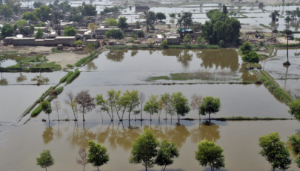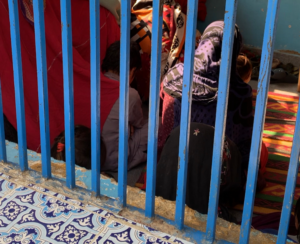
The healthcare system in Pakistan is once again under scrutiny as Karachi faces a significant surge in influenza cases.
As hospitals struggle to accommodate the increasing number of flu patients, the crisis highlights long-standing issues in the country’s medical infrastructure, including inadequate healthcare facilities, lack of preparedness, and insufficient resources to handle seasonal outbreaks.
Over the past few months, Karachi has seen a sharp rise in influenza cases, with hospitals reporting an overwhelming number of patients suffering from flu-like symptoms.
Medical professionals have identified a spike in cases of the H1N1 virus, commonly known as swine flu, along with other seasonal flu strains.
The situation has escalated to the point where healthcare facilities are struggling to provide adequate treatment to patients.
Government hospitals, as well as private healthcare centres, have reported a significant shortage of beds, medical staff, and essential medicines.
Emergency rooms are overflowing with flu patients, and doctors are working overtime to manage the crisis. Despite the seriousness of the situation, there has been a lack of timely intervention by health authorities, exacerbating the problem.
The ongoing influenza crisis has once again revealed the inadequacies of Pakistan’s healthcare infrastructure.
Karachi, the country’s largest city with a population exceeding 20 million, has a limited number of public hospitals that are often underfunded and overcrowded.
The increasing patient load has made it difficult for hospitals to manage flu cases effectively.
Many hospitals have reported a lack of ventilators and isolation wards necessary for treating severe influenza cases.
Moreover, there is a shortage of antiviral medications, which further hampers the ability of medical professionals to provide prompt treatment.
In some cases, patients are being turned away due to a lack of available resources, forcing them to seek expensive treatment at private hospitals or clinics.
One of the major reasons behind the rapid spread of influenza in Karachi is the lack of public awareness and preventive measures.
Many people fail to recognize the importance of flu vaccinations, proper hygiene practices, and early medical intervention.
The government has not launched sufficient awareness campaigns to educate the public about flu prevention, leading to an increase in infections.
Additionally, many citizens do not have access to affordable flu vaccines, making it difficult for vulnerable populations, such as children, the elderly, and those with pre-existing health conditions, to protect themselves.
The absence of a strong immunization drive further contributes to the worsening of the situation.
Despite the alarming rise in cases, the response from Pakistan’s health authorities has been slow and ineffective.
The government has failed to allocate additional resources to hospitals, and there has been little effort to contain the outbreak.
Experts argue that early intervention, such as increasing flu vaccination campaigns and ensuring an adequate supply of antiviral drugs, could have prevented the crisis from escalating to this level.
Moreover, there is a lack of real-time data collection and reporting mechanisms, which makes it difficult for policymakers to track the spread of the disease and implement targeted containment measures.
Without a proper surveillance system, the government remains ill-prepared to handle seasonal outbreaks effectively.
The influenza outbreak has underscored several key challenges in Pakistan’s healthcare system, particularly in Karachi:
Insufficient medical facilities: The city’s public hospitals are ill-equipped to handle large-scale disease outbreaks. Many facilities lack isolation wards, ventilators, and basic medical supplies.
Shortage of healthcare professionals: There is a critical shortage of doctors, nurses, and paramedical staff in Karachi, further exacerbating the crisis.
Poor disease surveillance: The lack of an effective disease surveillance system prevents early detection and response to influenza outbreaks.
Limited access to vaccination: Influenza vaccines are either unavailable or too expensive for a majority of the population, making it difficult to control the spread of the virus.
Underfunded healthcare sector: The healthcare sector in Pakistan receives insufficient funding, leading to chronic problems in medical facilities and service delivery.
Many countries around the world have established comprehensive influenza control programmes to mitigate seasonal outbreaks.
For instance, the United States and European nations emphasise annual flu vaccination campaigns, ensuring that high-risk groups receive proper immunization.
Additionally, these countries have well-developed surveillance systems to track flu trends and prepare hospitals accordingly.
In contrast, Pakistan lacks a structured approach to influenza prevention and control.
There are no nationwide vaccination drives, and hospitals often face shortages of essential supplies during peak flu seasons.
Learning from global best practices can help Pakistan develop a more robust strategy to combat future outbreaks.
The rising influenza cases in Karachi have once again highlighted the weaknesses in Pakistan’s healthcare system.
As hospitals struggle to cope with the overwhelming number of flu patients, it becomes evident that the country must take urgent steps to improve its medical infrastructure, enhance vaccination programmes, and implement effective disease surveillance measures. Without immediate action, Pakistan will continue to face similar healthcare crises in the future, putting countless lives at risk.






